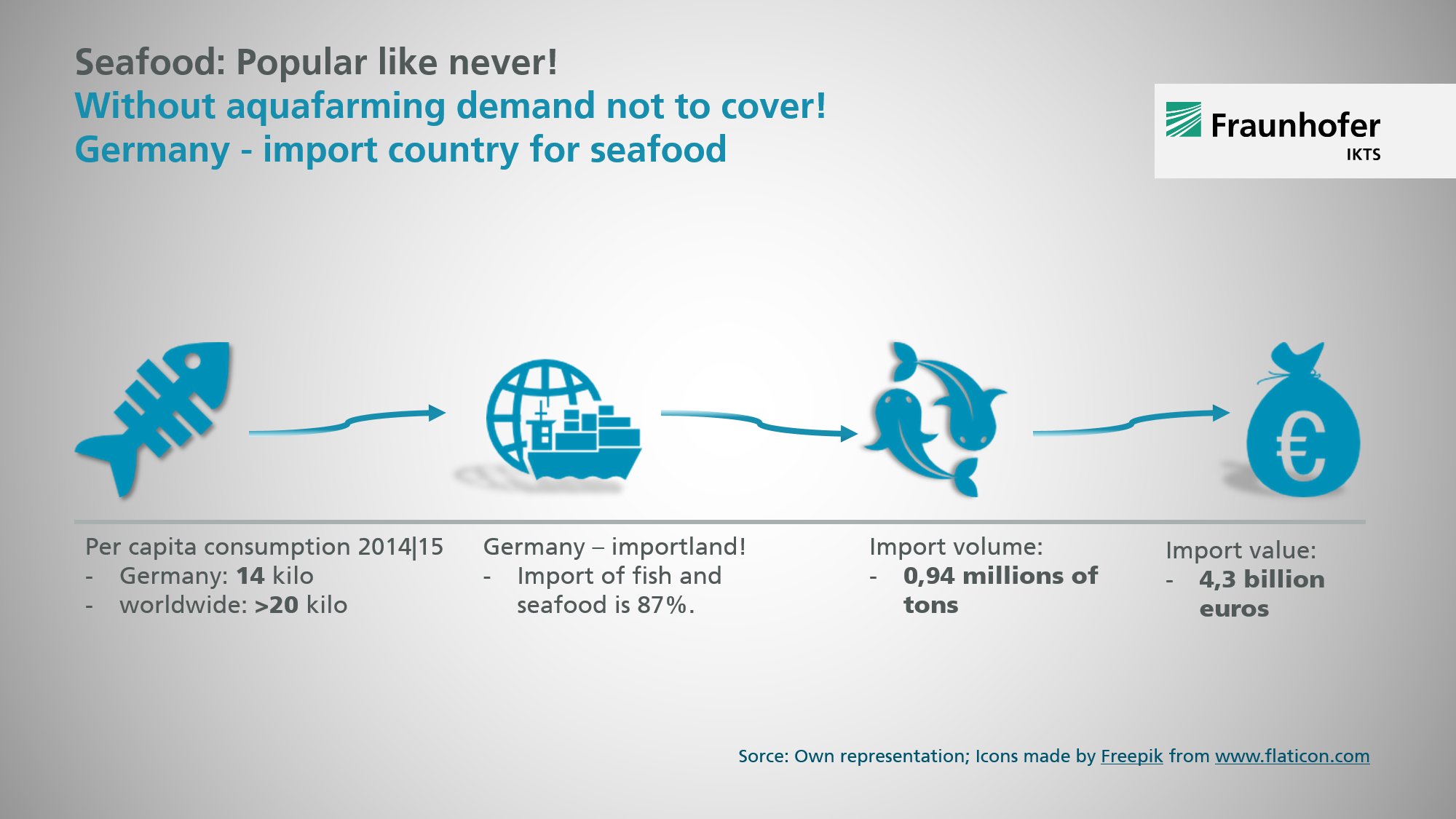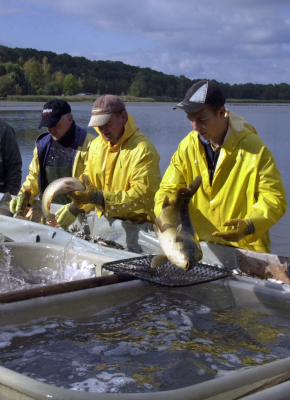Authors: Sandra Klinkmann | Anika Peucker
Fishing in the pond – ceramic filter systems for aquafarming
It smells like vacation, but everybody knows what is produced in the large ponds in Wermsdorf. Fish are cultivated in aquaculture, mainly carp but also sturgeon, pike and zander. The fish are kept appropriate to their species – and this since 1502 when the ponds were first documented. The aquafarming system is not the first of its kind. Ever since the 11th century European monks have been cultivating carp, an early form of aquafarming. Why? Probably due to many reasons. In general, fish and seafood is known to be nutritious because of the omega-3 fatty acids providing humans with high end proteins, vitamins, and minerals. The monks may have already known about the healthy components.
The worldwide demand for seafood cannot be covered without aquafarming
The demand for fish is increasing worldwide, partly because of its high nutritious value. According to the German Fish Information Center, the fish per capita consumption amounted to 14 kilos in Germany in 2015. In contrast, the worldwide consumption was already more than 20 kilos in 2014. This high demand cannot be met without pursuing excessive aquafarming, as the problem of overfishing has been known for many years. A further aspect is microplastic particles in the water. We consume microplastic particles through the food chain but the consequences have not been sufficiently researched yet.

This is why the demand for controlled aquafarming is steadily increasing. According to estimations, more than 50 percent of the worldwide demand for seafood is produced within aquafarming systems, mostly in Asia and South America. This is causing discussions about the sustainable use of resources. It is also causing discussions about Germany’s dependence on imports. Nearly 87 percent of fish was imported in 2015. This is equivalent to 0.94 tons with a value of more than 4.3 billion Euros. Therefore, national aquafarming has to be supported by the research sector to become increasingly independent while producing fish sustainably.
Off-flavor causes an earthy taste
One challenge in aquafarming is the need for fresh water within the systems. Aquafarming can be operated in closed as well as in open circulatory systems. The fresh water problem mainly affects closed circulatory systems in which all parameters can be controlled and environmental impacts like overfertilization of the water can be avoided. But overfertilization, which describes the enrichment with specific organic compounds, also occurs in closed circulations. How? Due to the decomposition of animal feces, remains of fish food, lack of fresh water etc. Like in open systems, there is hardly any water drainage due to the filters that are used. This is why the fish tastes earthy, an effect called off-flavor problem. The affected fish does not taste good. It cannot even be sold. A few days before slaughtering the fish, the farmer has to ensure a constant fresh water supply at drinking water quality, without the use of fish food. This is costly in terms of water and energy, which does not align with the sustainability approach.
Antibiotics within seafood
Another problem with aquafarming is chemistry. Farmers in Germany and the EU are bound to strict laws, however, antibiotics and other animal medicine infiltrate our food chain through fish and seafood. Consequences are already visible. This is why a solution is needed to consume seafood in a sustainable and healthy way.
The next quality step within aquafarming
As part of a collaborative project with partners from research and industry, among others Wermsdofer Fisch GmbH, the Westsächsische Hochschule Zwickau and the Eilenburger Elektrolyse- und Umwelttechnik GmbH, our researches, led by Dr. Burkhardt Faßauer, developed a new filtration technology which cleans the water and at the same time binds contaminates. The heart of the filtration is an intelligent membrane adsorber, which is based upon fine ceramic membranes. It can bind small substances which could not be adsorbed before. Clean water filters through and is led back to the pond. The contaminated membrane is treated with hot steam in-situ in order to be ready and clean for the next filtration process. This method provides a resource-efficient, stable, and sustainable aquatic circulation system, which tackles the challenges of aquafarming and brings it to a new level of quality.
The adsorptive ceramic membrane is going to be tested
A field test in larger aquafarming systems is planned as well as the construction of a pilot plant in a semi-industrial scale by the project partner. The researchers will continue their work in order to make the described process combination of activated carbon adsorption and membrane filtration profitable and available for other forms of fish farming. Because many of them love fish!
You may also be interested in this:
Biomass Technologies and Membrane Process Engineering
Nanoporous Membranes
Cleaning waste water effectively
Stay informed: You are welcome to subscribe to our newsletter, read our other blog articles and follow us on LinkedIn, Instagram and YouTube.
